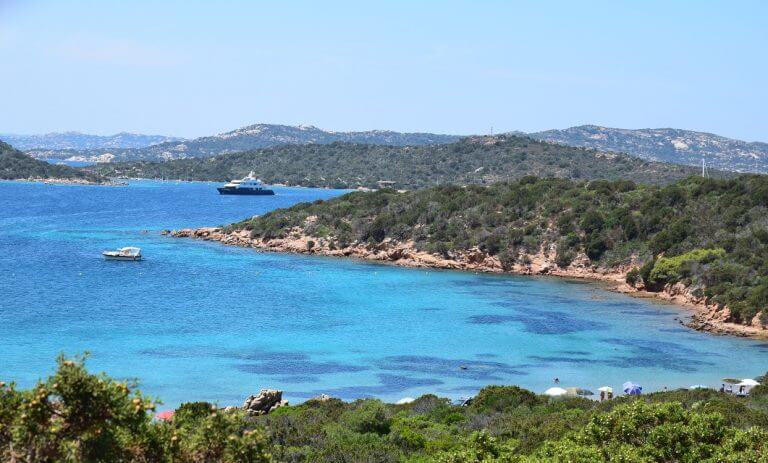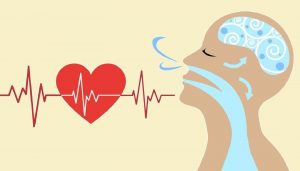Much has been writen about the post-vacation syndrome, sometimes called post-holiday blues. In this sense we are not original. However, few have approached it from the point of view of neuroscience. Understanding what happens in our brain helps us to provide these 7 ideas to overcome it. To minimize the intensity and duration of post-holiday blues or syndrome post-vacation.
At the end of August in the Northern Hemisphere (February in the Southern Hemisphere), many of us end our vacation period and return to the usual work routine.
And in this transition from leisure to work, who has not ever suffered from post-vacation syndrome or post-holiday blues? This is why it is a frequently discussed topic (Just an example).
It appears as a small depression because some symptoms are similar:
Lack of energy, of motivation, of ‘wanting’, and discouragement, sadness and blues.
But it’s just about this: a lower than normal mood, fortunately not lasting. We got over it in a few days. In fact, we have surpassed it many times.
Understanding the underlying brain processes helps us minimize the impact of post-vacation syndrome or post-holiday blues.
The purpose of this blog, NeuroQuotient, is to understand what happens in our brain in various situations and experiences. In this case with post vacation syndrome or post-holiday blues. If we are able to understand our internal processes, it is easier to develop cognitive strategies to improve our well-being.
It is true that some people suffer the post-vacation syndrome with greater intensity than others. Above all, those who have, and perceive, a greater contrast between “holidays” and the work environment. Stressful jobs, or with conditions that make them psychologically harder. For example, bosses (toxic and aggressive leaders), and/or colleagues, let’s say, unkind and with little empathy.
We highlighted the word perceive, because one’s own perception and internal experience, normally, is more important than the external one. Not all people experience similar circumstances in the same way. For this reason, it is relevant to understand what happens individually, so that each one can make their own adaptation of the 7 ideas we propose.
It is therefore about, understanding the brain processes, being able to minimize the intensity and duration of the post-holiday syndrome for each of us. What to do and what to avoid doing in each case?
Then, we can apply it to the summer holidays, to Christmas and, even, to the Mondya’s syndrome.
Where do we put the attention of thought? What emotions do we connect with? What is our state of mind?
The key is, on the one hand, to be aware of where we put the attention of our thoughts with the prefrontal cortex (PFC).
With thought we imagine and remember (awaking memories of the hippocampus). It depends on how and what our thoughts are, we connect with different emotional limbic registers that mark our mood. It is very different that we activate the amygdala (fear, threats) than the reward system (ventral tegmental area, dopamine, approach motivation)
Focused on post-vacation syndrome. Our emotional result will not be the same if we pay attention to the header image of the post (sunrise from a boat approaching the vacation destination), than in the following image (Fig 1): sunset on the last day of vacation . Also, in this case, a ship is leaving the island that was our destination.

But not only imagination and memory influence mood. Also, the state of mind in which we are enhances the imagination and memory of the ‘same tone’. If we are happy, our thoughts are happy. If we are sad, the imagination and the memories will be of sadness and blues..
In this way, we are reinforcing virtuous circles of positive mood or pessimistic circles of discouragement. When these loops of negative emotion and thought are persistent over time, then we can speak of depression and not precisely of post-holiday syndrome.
Thought focus and mood in the process from pre-holiday to post-holiday
Let’s see how our focus of thought and mood changes around the holidays. Let’s take a look at the process from a week before the holidays to a week after.
Where is our attention placed in each moment? What are the most probable imaginations and memories, and mood?
We will comment on Table I. In the first column is the time regarding vacations. In the following columns we indicate whether our attention is in the past, present or future.
Within the box, + indicates a positive state of mind (approach motivation, desire); – negative mood (discouragement, blues).
The global mood column is the resulting mood. How do we feel globally?
| Recent past | Present | Next future | Overall mood | |
| a. Pre-holiday’s week | = + | ++ | ++ | |
| b. Along holiday | + + + | + + + | ||
| c. Last vacation’s days | ++ | – | + | |
| d. Week after | – | – | – | — |
Table I. Thought attention and mood in the temporal process from pre-holiday to post-holiday.
a. Before the holidays. We are with the issues and problems of the present. Generally with a neutral or positive approach. The problems come to an end (if only temporarily). But, above all, with attention to future vacations. Imagining in a positive way (‘I am going to rest’, ‘I am going to enjoy’). The emotional gradient is positive mood.
0. We can do a countdown, there are 3,2,1, 0 days left until the holidays.
b. During the holidays. When we have completely disconnected from work (damned the one who pushes us to reconnect). Attention is in the present. At rest or on the trip. In the city we are visiting, in the book we are reading. In the landscape, in the sea or in the mountains.
The 7 ideas to counteract post-holiday syndrome
c. When they are finishing. We continue to live the holidays positively. But, with a risk. We can begin to connect with the future. To imagine negatively, the holidays are over!, ‘What am I going to find in the office?’, ‘That which I left pending’
- The last days of vacation, focus on the present. Put all the attention until the last moment in the present, in enjoying living in a positive way. It’s no use use in worrying, starting to think negatively about the future. We can trigger fear. Let us mentally stay where we are.
- No countdowns to work. Do not count the days left to return. This will draw our attention in the future. It can help us to ‘come back’. No gap between vacation and work. One day on vacation and the next at work.
d. We are back (the first days). It is usual that we only see the problems of the present and only imagine difficulties of the future. With this negative attention, our mind goes to the recent past (holidays) and we miss it. We go into homesickness, sadness, loss mode and sink into emotional misery. Syndrome post-vacation or ppost-holiday blues!
- Avoid what draws our attention to the recent past. Expect to watch videos and photos, for example. Wait a week! In the analogic world of the last century, it took a while for photographs and slides to be developed. This was in our favor.
- In a work environment, it is forbidden to ask (beyond looking good) about vacations. Beware of sadists (conscious or unconscious) who return a few days earlier than most. They overcome their post-vacation syndrome alone and, the following Monday, when the others return, they revel in their misery.
And three more ideas…
- Return to half throttle. Above we talked about going back suddenly, but we can try this other option. In this way, the contrast is not so great. We are lifting the rug little by little. Returning a few days earlier than most also serves to avoid the sadists we talked about earlier. Try, however, not to fall into the temptation of waiting for colleagues with problems just outside the door and contributing to their post-holiday depression.
- Positive thinking. Take advantage of a specific memory of the vacation as positive emotional fuel.
What was the best moment on vacation? With it we can create an anchor as we indicated in a previous post. It will help us connect with a positive emotional state. It is about accessing the emotional chemistry that gives us approach motivation and energy.
Be careful not to use the whole holidays! Just some specific experience!
We thoroughly relived the experience and created a trigger. It may be an image of a Fig 2 experience (I remember a bath in a cove on the island of Caprera / Sardinia). Then, faced with the temptation to think negatively, pay attention to the trigger to recover the empowering emotional state. It is important to use it as soon as possible, as a vaccine, not as an analgesic to calm discomfort.

- And humor, a lot of humor, very good humor. Laugh often. There is no reason to be sad. It does not help us to minimize or avoid post-vacation syndrome or post-holiday blues.




